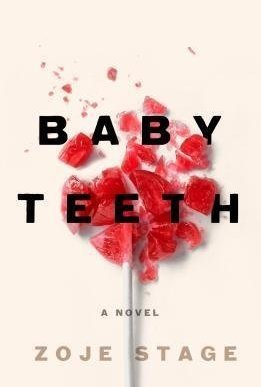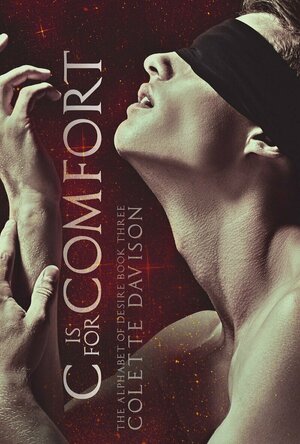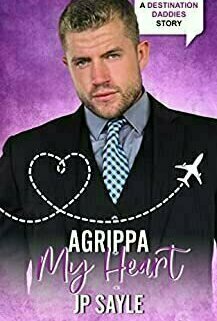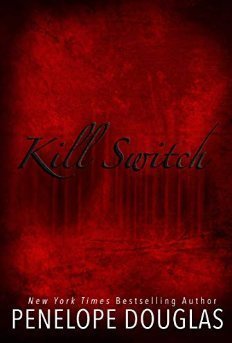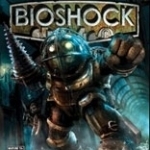Search
Search results
Debbiereadsbook (1630 KP) rated Austin (Learning to Love #4) by Con Riley in Books
Jun 2, 2022
emotional, but beautifully written!
Independent reviewer for Archaeolibrarian, I was gifted my copy of this book.
This is book 4 in the Learning To Love series but can be read as a stand-alone. I do, however, recommend all three books before this: Charles, Sol and Luke, but especially Luke. Austin pops up a lot in that book and I think you need to see that side of him, before you get to this side, you know?
And two very different sides to Austin they are, too! But once you get into his mind, and you see why he is like that, you can understand. Because Austin is in a lot of pain about something, and that something takes time to come out, the whole story isn't made clear til right near, so you are left putting a picture together of the clues, and the one I made was so very wrong.
But Dom, too, is in some pain, just a very different sort. And Austin helps him in ways he never knew he needed. Not just with Maisie, his daughter, but with his heart too.
I loved Dom, and Austin, both together and apart. Austin does some serious soul searching here and he makes amends with some people (not saying who though!) He has his "light bulb" moment right near the end, though, and really does his best to return home, or rather, home comes to him.
It's heavy on the emotions, this one, but light on the smexy times, and I loved that.
Again, only Austin has a say. I would have, ordinarily, said I needed to hear from Dom, but Dom has a lot to say, without words, and I heard him just fine. That's not to say I didn't WANT to hear from Dom, because I'm greedy, just that I felt I didn't NEED to hear from him, you know?
We caught up with Charles and Luke and Sol, and also with Sol's nephew Cameron. I think Cameron's part here was very much needed for both him and Austin, given their history. And the gift giving thing was awesome!
But, as much as I loved Austin and Dom, I have to say I think little Maisie stole the show here! She loved Austin Russell right from the start, it took her daddy time to catch her up!
Emotional, but wonderfully written and told.
5 stars
*same worded review will appear elsewhere
This is book 4 in the Learning To Love series but can be read as a stand-alone. I do, however, recommend all three books before this: Charles, Sol and Luke, but especially Luke. Austin pops up a lot in that book and I think you need to see that side of him, before you get to this side, you know?
And two very different sides to Austin they are, too! But once you get into his mind, and you see why he is like that, you can understand. Because Austin is in a lot of pain about something, and that something takes time to come out, the whole story isn't made clear til right near, so you are left putting a picture together of the clues, and the one I made was so very wrong.
But Dom, too, is in some pain, just a very different sort. And Austin helps him in ways he never knew he needed. Not just with Maisie, his daughter, but with his heart too.
I loved Dom, and Austin, both together and apart. Austin does some serious soul searching here and he makes amends with some people (not saying who though!) He has his "light bulb" moment right near the end, though, and really does his best to return home, or rather, home comes to him.
It's heavy on the emotions, this one, but light on the smexy times, and I loved that.
Again, only Austin has a say. I would have, ordinarily, said I needed to hear from Dom, but Dom has a lot to say, without words, and I heard him just fine. That's not to say I didn't WANT to hear from Dom, because I'm greedy, just that I felt I didn't NEED to hear from him, you know?
We caught up with Charles and Luke and Sol, and also with Sol's nephew Cameron. I think Cameron's part here was very much needed for both him and Austin, given their history. And the gift giving thing was awesome!
But, as much as I loved Austin and Dom, I have to say I think little Maisie stole the show here! She loved Austin Russell right from the start, it took her daddy time to catch her up!
Emotional, but wonderfully written and told.
5 stars
*same worded review will appear elsewhere
Acanthea Grimscythe (300 KP) rated The Windmill (The Windmill Massacre) (2016) in Movies
May 12, 2018
I spend a bit too much time on Facebook, of that there’s no doubt. As a result, I tend to pay attention to what movies my friends talk about. One such friend is horror author Edward Lorn, and one such movie that popped up in my feed because of him is The Windmill.
Set in Holland, The Windmill is a fun film that follows the traditional “haunted locale” story. Like most movies of this nature, viewers are presented with an abandoned building (the windmill), an old legend, and a supernatural being. In this case, the windmill is considered a gateway to Hell, courtesy of a miller that, after making a deal with the devil, ground the bones of his victims rather than flour. When a group of individuals embark on a tour of Holland’s windmills, what appears to be an every day, run of the mill (pun totally intended) attraction quickly turns deadly.
The Windmill‘s cast of characters fits several different roles, from the uppity doctor to the vengeful model and even the cliché mad woman with daddy issues. These characters remain true to their personality types and don’t tend to waiver, even as things continue to spin out of control, for which I am thankful – even though it means that they’re downright horrible people. The acting is fairly well done in comparison to a lot of available horror movies, too.
One of the things that did bother me about this movie was an extremely brief lack of continuity. At the point in which the tour bus breaks down in middle of the road, an incident occurs and the bus falls over. That isn’t altogether strange, aside from the fact that it appears to have been knocked over by a bird flying into the window. Whether that was intentional or not, I did find it to be a bit amusing. Since I don’t consider this to be much of a spoiler, I figured I’d simply point it out.
While The Windmill contains several elements of the slasher genre, it appeals more to the psyche via the use of the demonic haunting and vivid hallucinations that reveal the deepest, darkest secrets of its cast. It’s not the best film out there, but it is certainly entertaining in its own right and is undoubtedly worth the watch for a bit of cheesy horror fun. The title, also known as The Windmill Massacre, can be found on Netflix in the United States.
Set in Holland, The Windmill is a fun film that follows the traditional “haunted locale” story. Like most movies of this nature, viewers are presented with an abandoned building (the windmill), an old legend, and a supernatural being. In this case, the windmill is considered a gateway to Hell, courtesy of a miller that, after making a deal with the devil, ground the bones of his victims rather than flour. When a group of individuals embark on a tour of Holland’s windmills, what appears to be an every day, run of the mill (pun totally intended) attraction quickly turns deadly.
The Windmill‘s cast of characters fits several different roles, from the uppity doctor to the vengeful model and even the cliché mad woman with daddy issues. These characters remain true to their personality types and don’t tend to waiver, even as things continue to spin out of control, for which I am thankful – even though it means that they’re downright horrible people. The acting is fairly well done in comparison to a lot of available horror movies, too.
One of the things that did bother me about this movie was an extremely brief lack of continuity. At the point in which the tour bus breaks down in middle of the road, an incident occurs and the bus falls over. That isn’t altogether strange, aside from the fact that it appears to have been knocked over by a bird flying into the window. Whether that was intentional or not, I did find it to be a bit amusing. Since I don’t consider this to be much of a spoiler, I figured I’d simply point it out.
While The Windmill contains several elements of the slasher genre, it appeals more to the psyche via the use of the demonic haunting and vivid hallucinations that reveal the deepest, darkest secrets of its cast. It’s not the best film out there, but it is certainly entertaining in its own right and is undoubtedly worth the watch for a bit of cheesy horror fun. The title, also known as The Windmill Massacre, can be found on Netflix in the United States.
Whatchareadin (174 KP) rated Baby Teeth in Books
May 14, 2018
Hanna is seven years old and the apple of her father's eye. In his mind, she is his perfect little girl, his "lilla gumman". Suzette is Hanna's mother and she does all she can for Hanna, by home schooling her. But Hanna refuses to speak and has gotten kicked out of a few schools for her bad behavior. Is she not speaking because something is wrong or because she chooses not to? After countless doctor's visits, Suzette and Alex are at their wits end to find out what is wrong with their daughter. Hanna does not like her mother and will stop at nothing until it's just her and Daddy.
Thank you to NetGalley and St. Martins Press for the opportunity to read and review this book.
First, I want to say that I enjoyed this book and the story was very interesting. So, I don't know if it was me in a slump or the layout of the ARC, but I didn't find myself wanting to grab this book as soon as I could. Instead I found myself crushing candies and binge watching The Big Bang Theory.
What would you do if you had a non-verbal child who hated you? Her not speaking can not be explained by doctors, therapists or teachers. You know she has sound cause he makes weird noises and hums. But Hanna is determined to get her point across one way or another and that point is, Mommy must go. Her father is blinded by all her bad behavior since Hanna turns into an angel when he is around. When a series of events seriously harms Suzette, Alex can no longer be blinded by his daughter's niceness. Will they be able to get Hanna the help she needs or will Suzette live in fear of her own daughter for the rest of her life?
I really enjoyed this book. I don't think I have read anything quite like this about kids and their relationship with their parents. I'm thankful I don't have a child with behavioral problems, cause this book would have me watching my back all of the time. I think everyone who reads this will be able to sympathize with Suzette. Most mothers always try to do their best for their kids and at times it's seems it's never enough. But trying to survive your kid is a whole other story. I hope you will pick up this book and enjoy it like I did.
Thank you to NetGalley and St. Martins Press for the opportunity to read and review this book.
First, I want to say that I enjoyed this book and the story was very interesting. So, I don't know if it was me in a slump or the layout of the ARC, but I didn't find myself wanting to grab this book as soon as I could. Instead I found myself crushing candies and binge watching The Big Bang Theory.
What would you do if you had a non-verbal child who hated you? Her not speaking can not be explained by doctors, therapists or teachers. You know she has sound cause he makes weird noises and hums. But Hanna is determined to get her point across one way or another and that point is, Mommy must go. Her father is blinded by all her bad behavior since Hanna turns into an angel when he is around. When a series of events seriously harms Suzette, Alex can no longer be blinded by his daughter's niceness. Will they be able to get Hanna the help she needs or will Suzette live in fear of her own daughter for the rest of her life?
I really enjoyed this book. I don't think I have read anything quite like this about kids and their relationship with their parents. I'm thankful I don't have a child with behavioral problems, cause this book would have me watching my back all of the time. I think everyone who reads this will be able to sympathize with Suzette. Most mothers always try to do their best for their kids and at times it's seems it's never enough. But trying to survive your kid is a whole other story. I hope you will pick up this book and enjoy it like I did.
Gareth von Kallenbach (980 KP) rated Funny People (2009) in Movies
Aug 9, 2019
We all have our favorite Adam Sandler movies. There are the fans of The Wedding Singer and 50 First Dates and there’s the loyal camp who can quote Happy Gilmore or Big Daddy verbatim. You hear the name Adam Sandler’s and you think goofy, lovable guy. Dependably funny and quotable, from the mid-90’s on, he was the go-to comedian when we looked for an easy laugh. Of late, with the growing list of popular movies under his belt, when you think goofy, lovable funny guy, another name comes up: Seth Rogan. In “Funny People” you get them both.
Sandler plays George Simmons, a popular comedian who’s diagnosed with a fatal disease. Playing a comedian is hardly a stretch for Sandler, but for one whose dramatic turns can be counted on one hand, he plays the stricken man who’s suddenly face to face with his immortality quite convincingly. Rogan is Ira Wright, a desperate young comic who’s still vying for stage time at the local comedy club. George, perhaps recognizing a bit of himself or seeing a glimmer of comedic genius in Ira after catching his act, hires Ira to write for him.
Ira goes from writer and personal assistant/confidante to opening act as he helps George deal with his illness. He encourages the veteran comedian to reconnect with his compatriots in the business, opening the film to a parade of old faces from the stand-up circuit. George’s reflections on his life eventually lead him back to a lost love, Laura, played by Leslie Mann. Amidst the funny, laugh-out-loud scenes, are some believably tender moments, not just between Mann and Sandler but also, oddly enough, Sandler and Rogan.
Directing the comedic duo is writer/director Judd Apatow, who gave Rogan that growing list of successful movies after first casting him in The 40-Year-Old Virgin. Sandler could certainly use some of Apatow’s Midas-like touch after his recent string of marginal films. With a strong supporting cast of Jonah Hill and Jason Schwartzman who play Ira’s roommates Leo and Mark and Eric Bana, Laura’s husband, the movie is in turns hilarious and puzzling. The strong storyline of a veteran comedian taking a novice comic under his wings gets lost when George pursues a second chance with an unhappily married Laura. What could’ve been a touching passing of the torch tale is confused by an annoying love triangle. When the movie returns its focus to George and Ira, it’s saved, just barely, by the fact that we’re still watching two of comedy’s goofy, lovable funny guys.
Sandler plays George Simmons, a popular comedian who’s diagnosed with a fatal disease. Playing a comedian is hardly a stretch for Sandler, but for one whose dramatic turns can be counted on one hand, he plays the stricken man who’s suddenly face to face with his immortality quite convincingly. Rogan is Ira Wright, a desperate young comic who’s still vying for stage time at the local comedy club. George, perhaps recognizing a bit of himself or seeing a glimmer of comedic genius in Ira after catching his act, hires Ira to write for him.
Ira goes from writer and personal assistant/confidante to opening act as he helps George deal with his illness. He encourages the veteran comedian to reconnect with his compatriots in the business, opening the film to a parade of old faces from the stand-up circuit. George’s reflections on his life eventually lead him back to a lost love, Laura, played by Leslie Mann. Amidst the funny, laugh-out-loud scenes, are some believably tender moments, not just between Mann and Sandler but also, oddly enough, Sandler and Rogan.
Directing the comedic duo is writer/director Judd Apatow, who gave Rogan that growing list of successful movies after first casting him in The 40-Year-Old Virgin. Sandler could certainly use some of Apatow’s Midas-like touch after his recent string of marginal films. With a strong supporting cast of Jonah Hill and Jason Schwartzman who play Ira’s roommates Leo and Mark and Eric Bana, Laura’s husband, the movie is in turns hilarious and puzzling. The strong storyline of a veteran comedian taking a novice comic under his wings gets lost when George pursues a second chance with an unhappily married Laura. What could’ve been a touching passing of the torch tale is confused by an annoying love triangle. When the movie returns its focus to George and Ira, it’s saved, just barely, by the fact that we’re still watching two of comedy’s goofy, lovable funny guys.

Lola's ABC Party - Learn to Read
Education and Games
App
“I especially loved the matching letter to its sound, or, what us speech folk call "phonemic...
Debbiereadsbook (1630 KP) rated C is for Comfort (The Alphabet of Desire #3) in Books
Jul 28, 2021
the most emotional of the three.
Independent reviewer for Archaeolibrarian, I was gifted my copy of this book.
This is book 3 in the Alphabet of Desire series. Its not necessary to read book 1, A is for Aftercare, or book 2, B is for Beg, before this one. All three books run concurrently, so you get these guys falling fast and falling HARD, in all three books, and I really loved that! It was great watching Archie, Blake and Corey falling in love from each of the other brother's perspective, it really was.
Corey is the last to fall, and he does so beautifully! And I think, he's the most emotional of the three brothers, but doesn't always show it. Spence, though, he can read Corey like a book, or a painting, very quickly and Spence calls Corey out a time or two.
Corey wants what's best for his daughter, Lexi, and his brothers have been a godsend in helping him do that, but now Archie and Blake are leaving, he's not sure he can cope; at home or at work. But Spence? Spence helps him get clarity. He helps him see that just because the brothers won't be living together, they are still close, and they will always be. Spence helps Corey to relax about work, teaching is a stressful enough job, so adding your own pressure on yourself? Recipe for disaster, especially for a first year teacher.
Spence's job is stressful too, he's an A&E doctor, so he knows all about pressure. But Corey helps HIM see that he needs something more than a hook up every now and then. Corey helps Spence see he needs a family, even if he didn't know he did. He has his sister and her kids, but with Corey and Lexi, Spence sees he needs more; wants more.
It's not heavy on the BDSM, more the care a Daddy gives. It's smexy and sweet, and emotional. I cried a bit, at Corey, and I don't quite know why!
It's been fun watching these guys, all seven of them, fall hard and fall fast. In ways they did not see coming, at all! That they run concurrently was different, but I liked it once I realised that's how they were written. It's different, I do enjoy different.
All three books are wonderful reads with book 2, Beg, being my favourite. If you enjoy low angst books, I would HIGHLY recommend these!
4 paint splattered stars
**same worded review will appear elsewhere**
This is book 3 in the Alphabet of Desire series. Its not necessary to read book 1, A is for Aftercare, or book 2, B is for Beg, before this one. All three books run concurrently, so you get these guys falling fast and falling HARD, in all three books, and I really loved that! It was great watching Archie, Blake and Corey falling in love from each of the other brother's perspective, it really was.
Corey is the last to fall, and he does so beautifully! And I think, he's the most emotional of the three brothers, but doesn't always show it. Spence, though, he can read Corey like a book, or a painting, very quickly and Spence calls Corey out a time or two.
Corey wants what's best for his daughter, Lexi, and his brothers have been a godsend in helping him do that, but now Archie and Blake are leaving, he's not sure he can cope; at home or at work. But Spence? Spence helps him get clarity. He helps him see that just because the brothers won't be living together, they are still close, and they will always be. Spence helps Corey to relax about work, teaching is a stressful enough job, so adding your own pressure on yourself? Recipe for disaster, especially for a first year teacher.
Spence's job is stressful too, he's an A&E doctor, so he knows all about pressure. But Corey helps HIM see that he needs something more than a hook up every now and then. Corey helps Spence see he needs a family, even if he didn't know he did. He has his sister and her kids, but with Corey and Lexi, Spence sees he needs more; wants more.
It's not heavy on the BDSM, more the care a Daddy gives. It's smexy and sweet, and emotional. I cried a bit, at Corey, and I don't quite know why!
It's been fun watching these guys, all seven of them, fall hard and fall fast. In ways they did not see coming, at all! That they run concurrently was different, but I liked it once I realised that's how they were written. It's different, I do enjoy different.
All three books are wonderful reads with book 2, Beg, being my favourite. If you enjoy low angst books, I would HIGHLY recommend these!
4 paint splattered stars
**same worded review will appear elsewhere**
love books like this, books that push MY buttons, in ways I didn't like before.
Independent reviewer for Archaeolibrarian, I was gifted my copy of this book.
Patrick has been let down by the Cuff'd app, but a message from a new Daddy makes Patrick wish. It makes him wish he lived in Italy, where Akker lives. And Akker wishes too. Akker uses his friends to get Patrick to Italy. But that let down also follows Patrick and Patrick has to dig deep to get through.
I read a lot of kink books and I make no bones about what I like and what I do not like. And this book surprised me! In all the best ways!
There are some aspects of Patrick's kink that are at the very VERY bottom of my like list, but quite HIGH on my dislike list. I'm not going to say what, cos spoilers, but suffices to say, Sayle dealt with said kink very well. So very well, in fact, it wasn't till I finished that the penny dropped! I mean I read about it, when Akker and Patrick were together, but it did not click, it really didn't! So well played there!
I loved, I mean LOVED that Patrick showed Akker some things that he really hadn't considered his own kink. To be fair, I don't think that Patrick realised it was one of his kinks till the point he did what he did. I loved that an experienced Dom can learn new things, things that push his own buttons in ways he never knew could be pushed.
I didn't think this was especially hawt, in the grand scheme of things. Indeed, the smexy times are quite low, but the kink level is high. It is very emotional, for Patrick especially, I thought. He has some demons to slay, and Akker and his connections help him slay them.
I found it incredibly high on the too stinking cute and the warm and fuzzies scale though! I loved the interactions between Patrick, Beau and Jessie, who are sharing a house in the beginning. Jessie has his own story in His Boy To Tease, but Beau needs a story too! And Lowell, the poor kid who got dragged into this whole mess, he needs a happy every after, I felt sorry for him!
I love books like this, books that push MY buttons, in ways I didn't like before.
5 full and shiny stars
*same worded review will appear elsewhere
Patrick has been let down by the Cuff'd app, but a message from a new Daddy makes Patrick wish. It makes him wish he lived in Italy, where Akker lives. And Akker wishes too. Akker uses his friends to get Patrick to Italy. But that let down also follows Patrick and Patrick has to dig deep to get through.
I read a lot of kink books and I make no bones about what I like and what I do not like. And this book surprised me! In all the best ways!
There are some aspects of Patrick's kink that are at the very VERY bottom of my like list, but quite HIGH on my dislike list. I'm not going to say what, cos spoilers, but suffices to say, Sayle dealt with said kink very well. So very well, in fact, it wasn't till I finished that the penny dropped! I mean I read about it, when Akker and Patrick were together, but it did not click, it really didn't! So well played there!
I loved, I mean LOVED that Patrick showed Akker some things that he really hadn't considered his own kink. To be fair, I don't think that Patrick realised it was one of his kinks till the point he did what he did. I loved that an experienced Dom can learn new things, things that push his own buttons in ways he never knew could be pushed.
I didn't think this was especially hawt, in the grand scheme of things. Indeed, the smexy times are quite low, but the kink level is high. It is very emotional, for Patrick especially, I thought. He has some demons to slay, and Akker and his connections help him slay them.
I found it incredibly high on the too stinking cute and the warm and fuzzies scale though! I loved the interactions between Patrick, Beau and Jessie, who are sharing a house in the beginning. Jessie has his own story in His Boy To Tease, but Beau needs a story too! And Lowell, the poor kid who got dragged into this whole mess, he needs a happy every after, I felt sorry for him!
I love books like this, books that push MY buttons, in ways I didn't like before.
5 full and shiny stars
*same worded review will appear elsewhere
Lyndsey Gollogly (2893 KP) rated Kill Switch in Books
Feb 17, 2023
🔞🔞🔞
17 of 235
Kindle
Kill switch ( Devils Night book 3)
By Penelope Douglas
⭐️⭐️⭐️⭐️
"I've done far worse than what I went to prison for. She has no idea how bad this can get."
WINTER
Sending him to prison was the worst thing I could’ve done. It didn’t matter that he did the crime or that I wished he was dead. Perhaps I thought I’d have time to disappear before he got out or he’d cool off in jail and be anything but the horror he was.
But I was wrong. Three years came and went too fast, and now he’s anything but calm. Prison only gave him time to plan.
And while I anticipated his vengeance, I didn’t expect this.
He doesn’t want to make me hurt. He wants to make everything hurt.
DAMON
First thing’s first. Get rid of her daddy. He told them I forced her. He told them his little girl was a victim, but I was a kid, too, and she wanted it just as much as I did.
Step two… Give her, her sister, and her mother nowhere to run and no fuel to escape. The Ashby women are alone now and desperate for a knight in shining armor.
But that’s not what’s coming.
No, it’s time I listened to my father and took control of my future. It’s time I showed them all—my family, her family, my friends—that I will never change and that I have no other ambition than to be the nightmare of their lives.
Starting with her.
She’ll be so scared, she won’t even be safe in her own head by the time I’m done with her. And the best part is I won’t have to break into her home to do it.
As the new man of the house I have all the keys.
For gods sake this woman knows how to kick you in the guts with trauma! This has so many trigger warnings. This book makes you feel everything it’s quite graphic and she doesn’t hold back! Whether you like this series or not the woman writes abuse better than anyone I’ve read she gets you feeling all the emotions. I still can’t stand these men but there is a catalyst for each one of them that being the worlds worst parents they certainly didn’t do their kids any good. One thing I love is these women are strong and ruling the world is on the agenda!
17 of 235
Kindle
Kill switch ( Devils Night book 3)
By Penelope Douglas
⭐️⭐️⭐️⭐️
"I've done far worse than what I went to prison for. She has no idea how bad this can get."
WINTER
Sending him to prison was the worst thing I could’ve done. It didn’t matter that he did the crime or that I wished he was dead. Perhaps I thought I’d have time to disappear before he got out or he’d cool off in jail and be anything but the horror he was.
But I was wrong. Three years came and went too fast, and now he’s anything but calm. Prison only gave him time to plan.
And while I anticipated his vengeance, I didn’t expect this.
He doesn’t want to make me hurt. He wants to make everything hurt.
DAMON
First thing’s first. Get rid of her daddy. He told them I forced her. He told them his little girl was a victim, but I was a kid, too, and she wanted it just as much as I did.
Step two… Give her, her sister, and her mother nowhere to run and no fuel to escape. The Ashby women are alone now and desperate for a knight in shining armor.
But that’s not what’s coming.
No, it’s time I listened to my father and took control of my future. It’s time I showed them all—my family, her family, my friends—that I will never change and that I have no other ambition than to be the nightmare of their lives.
Starting with her.
She’ll be so scared, she won’t even be safe in her own head by the time I’m done with her. And the best part is I won’t have to break into her home to do it.
As the new man of the house I have all the keys.
For gods sake this woman knows how to kick you in the guts with trauma! This has so many trigger warnings. This book makes you feel everything it’s quite graphic and she doesn’t hold back! Whether you like this series or not the woman writes abuse better than anyone I’ve read she gets you feeling all the emotions. I still can’t stand these men but there is a catalyst for each one of them that being the worlds worst parents they certainly didn’t do their kids any good. One thing I love is these women are strong and ruling the world is on the agenda!
Matthew Krueger (10051 KP) rated the Xbox 360 version of BioShock in Video Games
Oct 21, 2019
Would You Kindly
Contains spoilers, click to show
Bioshock- is a horrorfying game, it has adventure, chills, thrills, twist, turns and so much more. It is a fantasic game to play. If you havent not played it, than i would highly reccordmend it. Lets talk about it...
The Plot: BioShock is set in 1960. The player guides the protagonist, Jack, after his airplane crashes in the ocean near the bathysphere terminus that leads to the underwater city of Rapture. Built by the business magnate Andrew Ryan, the city was intended to be an isolated utopia, but the discovery of ADAM, a genetic material which can be used to grant superhuman powers, initiated the city's turbulent decline. Jack tries to find a way to escape, fighting through hordes of ADAM-obsessed enemies, and the iconic, deadly Big Daddies, while engaging with the few sane humans that remain and eventually learning of Rapture's past.
The player, as Jack, can defeat foes in several ways by using weapons, utilizing plasmids that give unique powers, and by turning Rapture's defenses against them.
The twist is unexpected and once you find out, it is so unexpected. It's revealed that Atlas is actually the gangster Frank Fontaine, who'd smuggled Jack to the surface several years earlier with the intention of bringing him back as a weapon, as "your" DNA can operate a lot of Rapture's systems that only Ryan would otherwise have access to. Jack has been abused, hypnotized to carry fabricated memories and respond to a key phrase: "Would you kindly." Fontaine has been, to this point in the game, using it to control Jack's progression through Rapture.
Bioshock aslo has two different ends: The ending depends on how the player interacted with the Little Sisters:
1. If the player rescues all of the Little Sisters (or harvests only one of them), Jack takes them back to the surface with him and adopts five of them as his daughters, and Tenenbaum happily narrates how they go on to live full lives under his care, eventually surrounding him on his deathbed. This ending is consideredc anon in BioShock Infinite: Burial at Sea.
2. If the player harvests more than one Little Sister, Jack turns on the Little Sisters to harvest their ADAM. Tenenbaum sadly narrates what occurred, condemning Jack and his actions. A US Navy submarine then comes across the wreckage of the plane and finds itself suddenly surrounded by bathyspheres containing Splicers who attack the crew and take control of it. The submarine is revealed to be carrying nuclear missiles, with Tenenbaum claiming that Jack has now "stolen the terrible secrets of the world": the more Little Sisters are harvested, the harsher and more furious Tenenbaum's narrative becomes.
Dont forget about the big daddy.
I love this game, it is a classic. I wouls highly reccordmend playing this game.
The Plot: BioShock is set in 1960. The player guides the protagonist, Jack, after his airplane crashes in the ocean near the bathysphere terminus that leads to the underwater city of Rapture. Built by the business magnate Andrew Ryan, the city was intended to be an isolated utopia, but the discovery of ADAM, a genetic material which can be used to grant superhuman powers, initiated the city's turbulent decline. Jack tries to find a way to escape, fighting through hordes of ADAM-obsessed enemies, and the iconic, deadly Big Daddies, while engaging with the few sane humans that remain and eventually learning of Rapture's past.
The player, as Jack, can defeat foes in several ways by using weapons, utilizing plasmids that give unique powers, and by turning Rapture's defenses against them.
The twist is unexpected and once you find out, it is so unexpected. It's revealed that Atlas is actually the gangster Frank Fontaine, who'd smuggled Jack to the surface several years earlier with the intention of bringing him back as a weapon, as "your" DNA can operate a lot of Rapture's systems that only Ryan would otherwise have access to. Jack has been abused, hypnotized to carry fabricated memories and respond to a key phrase: "Would you kindly." Fontaine has been, to this point in the game, using it to control Jack's progression through Rapture.
Bioshock aslo has two different ends: The ending depends on how the player interacted with the Little Sisters:
1. If the player rescues all of the Little Sisters (or harvests only one of them), Jack takes them back to the surface with him and adopts five of them as his daughters, and Tenenbaum happily narrates how they go on to live full lives under his care, eventually surrounding him on his deathbed. This ending is consideredc anon in BioShock Infinite: Burial at Sea.
2. If the player harvests more than one Little Sister, Jack turns on the Little Sisters to harvest their ADAM. Tenenbaum sadly narrates what occurred, condemning Jack and his actions. A US Navy submarine then comes across the wreckage of the plane and finds itself suddenly surrounded by bathyspheres containing Splicers who attack the crew and take control of it. The submarine is revealed to be carrying nuclear missiles, with Tenenbaum claiming that Jack has now "stolen the terrible secrets of the world": the more Little Sisters are harvested, the harsher and more furious Tenenbaum's narrative becomes.
Dont forget about the big daddy.
I love this game, it is a classic. I wouls highly reccordmend playing this game.
Purple Phoenix Games (2266 KP) rated No Thanks! in Tabletop Games
Jan 6, 2020
Can a game with absolutely no theme be any good? Let’s find out with today’s game: No Thanks!
Usually in my intros I like throw a little flavor that matches the theme of the game. Well, I just couldn’t think of anything so you get the shortest intro I have done to date. No Thanks! is a great card game of push your luck. Period. I’ll tell you all the rules here since this mighty game may be bypassed in stores as it looks very unassuming and bland.
You are trying to get the least amount of points in a very nontraditional way. In the deck are cards numbered 3-35. You shuffle them all up and randomly eject from the game 9 cards. Nobody will know which 9. Why does that matter? Well, you score points (which is bad) equal to the lowest number of all your runs of cards. So a run of 3-4-5-6 scores 3 points because 3 is the lowest card. However, if 5 was one of the ejected cards and you had 3-4 and 6, you total would be 9 (3 from the first run and 6 from the next run since there wasn’t a 5 to connect them).
How do you get these cards? Well, on your turn you flip over a card from the face-down stack. Decide if you want to take that card into your tableau or if you would like to pass. If passing, you plop a red chip on it (of the 11 you were given at setup) and offer it to the next player. They can take the card along with the chip, or add a chip of their own. The offer now goes to the next player who does the same. Whomever ends up with the card also collects all the chips to be used on future cards.
This doesn’t really sound all that fun does it? Well it most certainly IS fun once you give it a go! Especially when you’re trying to decide if you should just take the 15 because you already have a run of 12-13-14 and it would be worth zero points, but you are also running low on chips. Let it ride around the table a couple times and get those chips! But beware of your opponents who will take the card out of spite and now you can’t connect your runs and you are low on chips. Uh oh Daddy-O!
This game is great with all player counts, and with all ages who can understand the math behind their choices. That’s why we at Purple Phoenix Games authorize a non-themed score of 8 / 12.
Usually in my intros I like throw a little flavor that matches the theme of the game. Well, I just couldn’t think of anything so you get the shortest intro I have done to date. No Thanks! is a great card game of push your luck. Period. I’ll tell you all the rules here since this mighty game may be bypassed in stores as it looks very unassuming and bland.
You are trying to get the least amount of points in a very nontraditional way. In the deck are cards numbered 3-35. You shuffle them all up and randomly eject from the game 9 cards. Nobody will know which 9. Why does that matter? Well, you score points (which is bad) equal to the lowest number of all your runs of cards. So a run of 3-4-5-6 scores 3 points because 3 is the lowest card. However, if 5 was one of the ejected cards and you had 3-4 and 6, you total would be 9 (3 from the first run and 6 from the next run since there wasn’t a 5 to connect them).
How do you get these cards? Well, on your turn you flip over a card from the face-down stack. Decide if you want to take that card into your tableau or if you would like to pass. If passing, you plop a red chip on it (of the 11 you were given at setup) and offer it to the next player. They can take the card along with the chip, or add a chip of their own. The offer now goes to the next player who does the same. Whomever ends up with the card also collects all the chips to be used on future cards.
This doesn’t really sound all that fun does it? Well it most certainly IS fun once you give it a go! Especially when you’re trying to decide if you should just take the 15 because you already have a run of 12-13-14 and it would be worth zero points, but you are also running low on chips. Let it ride around the table a couple times and get those chips! But beware of your opponents who will take the card out of spite and now you can’t connect your runs and you are low on chips. Uh oh Daddy-O!
This game is great with all player counts, and with all ages who can understand the math behind their choices. That’s why we at Purple Phoenix Games authorize a non-themed score of 8 / 12.


